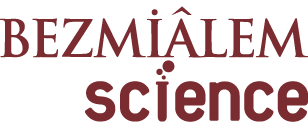ÖZET
Amaç:
Bu çalışma, üç farklı restoratif dental materyale uygulanan klorheksidin glukonat (CHX), Listerin ve borik asidin (BA) Streptococcus mutans (S. mutans) adezyonu üzerindeki etkisini değerlendirmeyi amaçlamaktadır.
Yöntemler:
Çalışmada toplam 120 adet numune hazırlandı: Kompozit reçine (Grup CR; n=40), cam iyonomer siman (Grup GIC; n=40) ve kompomer (Grup C; n=40). Numunelerin alt ve üst yüzey pürüzlülükleri ölçüldü. Bakteriyel adezyonlardan sonra her grup dört alt gruba ayrıldı (n=10). Bir dakika boyunca üç gargara ve distile su uygulandı. Ardından, kalan S. mutans biyofilmleri koloni oluşturan birim sayısı (CFU) ve MTT yöntemleriyle incelendi. Veriler istatistiksel olarak değerlendirildi (p<0,05).
Bulgular:
Yüzey pürüzlülüğü açısından GIC en yüksek, CR en düşüktü. Üç grup arasında fark vardı (p<0,001). Üç gargaranın tümünün bakteri sayımlarının Log CFU etkinliği, distile sudan daha yüksekti (p<0,001). Üç gargara ve distile suyun S. mutans log CFU ve MTT değerleri üzerindeki etkisi gruplar arasında farklılık gösterdi (p<0,001). CHX en etkili olanıydı. Restoratif materyal-gargara etkileşimleri açısından gruplar arasında fark bulundu (p<0,05). Log CFU ve MTT değerleri arasında pozitif orta derecede istatistiksel olarak anlamlı bir korelasyon vardı (r=0,636; p<0,001).
Sonuç:
BA, doğal yapısı ve yan etkilerinin minimal olması nedeniyle diğer gargaralara alternatif olabilir.



